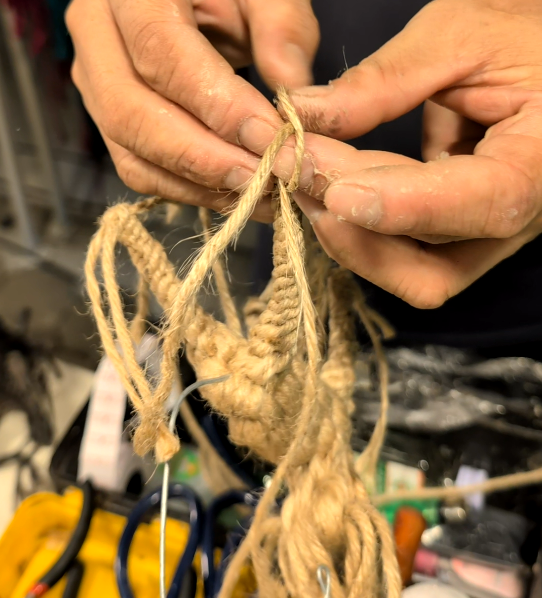
How to Spot Fake ‘Artisan-Made’ Homewares Online
Share
In a world where every store (online or brick and mortar), seems to have an “artisan-inspired” collection, it’s getting harder to tell the real from the knock-off.
Scroll through your feed and you’ll see the same style of woven basket or brass tray popping up on dozens of websites, each claiming it’s handcrafted. The truth? Many of these pieces are mass-produced replicas, with no connection to the artisans whose designs they imitate.
For genuine makers, it’s more than just frustrating, it’s damaging. Copycat designs dilute the value of their work, strip away cultural heritage, and flood the market with poor-quality imitations.
If you value authenticity, here’s how to make sure your next “artisan” purchase is the real deal.
Why Fake ‘Artisan-Made’ Homewares Are Everywhere
The demand for unique, handcrafted décor has exploded in recent years. Unfortunately, mass producers have taken notice - and it's something we have seen locally in the usual fast-fashion stores.
Large factories now churn out items that mimic the look of artisan goods but lack the craftsmanship, story, and soul behind them. Not the mention, they are often made on synthetic and cheap materials.
These products are often marketed with buzzwords like handmade, boho, sustainable, and artisan, all terms that sound good but mean nothing without proof. They’re designed to hook customers quickly, without telling the true story of who made them, where, or how.
7 Ways to Tell if Homewares Are Really Artisan-Made
We're so passionate about making true artisan-made wares the new normal, and the people (that's you) need to be the reason why these fast-fashion retailers are forced to stop copying others works. They have their lane and they need to stick within it, and blatant cheap knock-offs are not it.
1. Look Closely at the Details
True handmade pieces carry subtle irregularities, like a variation in glaze, a hand-carved edge that’s not perfectly symmetrical, a slight change in colour from one item to the next. These are signs of a human touch, not a machine.
2. Check the Materials
Artisans often work with natural, high-quality materials like solid brass, hand-dyed fabrics, or sustainably sourced wood or linens. If something is advertised as “artisan” but made from cheap synthetics, it’s likely a copy. Make sure you also look into the materials noted on the product, these fast-fashion retailers have a way of creating a million different works for essentially the same thing: plastic.
3. Read the Product Description
Genuine artisan sellers tell a story, who made the item, what inspired it, and the traditional techniques used. If you see a vague, one-line description with no mention of the maker or origin, be cautious. Even more so if there is no mention about these details whatsoever.
4. Consider the Price
Craftsmanship takes time. While prices of course differ for many different reasons, a good guide is if the price feels too good to be true for something that supposedly took hours or days to make, it probably is.
5. Look for Transparency in Sourcing
A trustworthy seller will share how they source their products, whether that’s meeting artisans in person, working directly with cooperatives, or partnering with verified fair-trade groups. Transparency builds trust, even if the business is new.
6. Look for Cultural Context
Many artisan pieces have deep cultural roots. A seller who shares the meaning behind a pattern or design, of credits its origin, is more likely to be genuine. This may not always be the case as some retailers selling genuine pieces may choose to not include these, but if it's avoided throughout their entire site, it's a pretty good indication that they are not selling true pieces.
7. Ask Before You Buy
If in doubt, ask questions. A legitimate artisan or retailer will happily share details about the maker, materials, and process. Silence or vague responses are a red flag.
Why It Matters
Buying genuine artisan-made homewares isn’t just about avoiding fakes. It’s about:
- Supporting skilled craftspeople and their livelihoods
- Preserving cultural heritage and traditional techniques
- Owning something with meaning, quality, and a story you’ll want to share (and show off in your home)
When you choose authenticity, you’re making a purchase that will last, in both quality and significance.
Where to Find Authentic Artisan Homewares
At Vita Haus, every piece is sourced directly from artisans we meet in person. We work in small batches, not mass production, ensuring each item carries its maker’s touch and story.
From handwoven textiles to custom brass décor, our collections are designed for homes that value meaning over trends.
Explore our Artisan-Made Homewares
So; the next time you shop for “artisan-made” homewares, remember: authenticity isn’t just a label, it’s a legacy. Choose pieces that hold a story, not just a price tag.

FAQ: Spotting Genuine Artisan-Made Homewares
Q: What does ‘artisan-made’ actually mean?
A: It refers to items created by skilled craftspeople, often by hand, using traditional techniques, not mass-produced in a factory.
Q: How can I tell if something is truly handmade?
A: Look for slight variations, detailed maker information, and the use of high-quality materials.
Q: Are artisan products always more expensive?
A: Not always, but genuine craftsmanship does take time and skill, which is often reflected in the price.
Q: Why is cultural credit important?
A: It respects the origin of a design and ensures the makers are acknowledged and fairly compensated. It also ensures the buyers understand where, who and how the pieces they choose to purchase, came to be.
Q: Where can I buy real artisan homewares?
A: Look for trusted, transparent sellers like us, Vita Haus, who source directly from artisans and share the story behind every piece.



